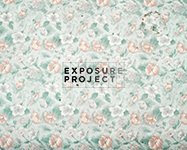
I just recently watched Federico Fellini's largely forgotten 1968 film Toby Dammit. Part of a three-episode film released under the moniker Spirits of the Dead, Toby Dammit tells the story of an inebriated British actor (Terrence Stamp) who arrives in Rome on a publicity tour only to be haunted by the devil, who appears to him in the form of a little girl with a bouncing ball (pictured above).
Each episode in based on a different Edgar Allan Poe story. Fellini's film takes its inspiration from "Never Bet the Devil Your Head," while Roger Vadim directs "Metzengerstein" and Louis Malle interprets "William Wilson." I have yet to see Vadim or Malle's efforts, however, Toby Dammit is a surreal and grotesque masterpiece. Anyone familiar with Fellini's work will find definite thematic parallels to many of his others works. As Vicent Canby writes:
"Unlike Poe's story, there is nothing especially cheerful about Fellini's film except its extravagance of visual detail. The last hours in Toby Dammit's life become a typical Fellini fantasmagoria, a descent into a maelstrom of grotesque settings, props and faces, including that of a little girl with long blond hair, not unlike the girl who called soundlessly to Marcello Mastroianni across the tidal rift at the end of "La Dolce Vita." Except for the fact that she has crimson fingernails and a definite leer, you'd hardly recognize her as Old Nick."
Still from Toby Dammit (Spirits of the Dead), 1968. (dir. Tomas Federico Fellini, cine. Giuseppe Rotunno)





















































